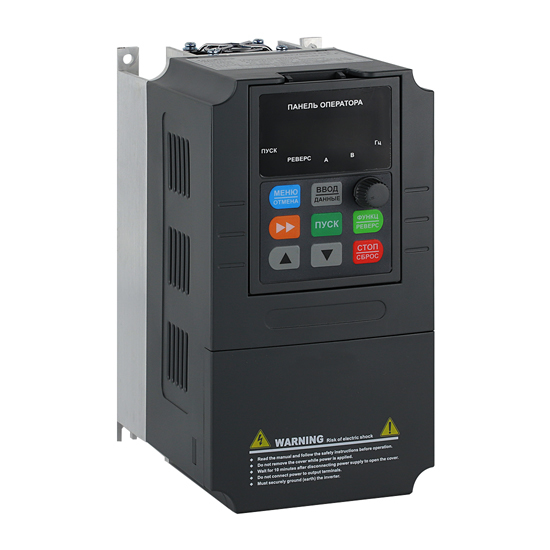Frequency inverter is a power control equipment that uses frequency conversion technology and microelectronics technology to control AC motors by changing the working power frequency of the motor. The frequency inverter is widely used in various industries, mainly because of its energy saving and frequency conversion speed regulation function in equipment and operating system application, then from what aspects of the frequency inverter protect the motor? In this article, Inverter.com will introduce something about this topic. Next, we will list ten ways in which the frequency inverter protects the motor.
10 ways to protect motors with frequency inverters
- Over-voltage Protection. The output of single phase frequency inverter has a voltage detection function, frequency inverter can automatically adjust the output voltage so that the motor does not bear overvoltage. The converter protects the motor by stopping even when the output voltage adjustment fails and the output voltage exceeds 110% of the normal voltage.

- Under-voltage Protection. When the voltage of the motor is less than 90% of the normal voltage, the inverter protection stops.
- Over-current Protection. When the motor current exceeds 150% of the rated value for 3 seconds or 200% of the rated current for 10 microseconds, the inverter protects the motor by shutting down.
- Open-phase Protection. Monitor the output voltage. When the output is out of phase, the frequency inverter will alarm. After some time, the frequency inverter will stop to protect the motor.
- Phase-reversal Protection. The inverter makes the motor rotate in only one direction, and cannot set the rotation direction. Unless the user changes the phase sequence of the wiring of the motors A, B, and C, there is no possibility of reversing the phase.
- Overload Protection. The converter monitors the motor current and protects the motor by shutting down when the motor current exceeds 120% of the rated current / 1 minute.
- Ground Protection. The frequency inverter is equipped with a special ground protection circuit, which is generally composed of a ground protection transformer and relay. When one or two-phase ground contact occurs, the frequency inverter will alarm. Of course, if the user requires, we can also be designed to protect the shutdown immediately after grounding.
- Short-circuit Protection. The short circuit of the converter output will inevitably cause overcurrent, and the converter will stop to protect the motor within 10 microseconds.
- Over-frequency Protection. The frequency inverter has a maximum and minimum frequency limit function so that the output frequency can only be in the specified range, thus realizing the over frequency protection function.
- Stall Protection. Stall protection is generally aimed at synchronous motors. For asynchronous motors, the stall in the acceleration process is bound to be overcurrent, and the frequency inverter realizes this protection function through overcurrent and overload protection. Stalling during deceleration can be avoided by setting a safe deceleration time during debugging.
By incorporating these protective features, a frequency inverter ensures that the motor operates safely and efficiently, thereby extending its lifespan and reducing maintenance costs.
